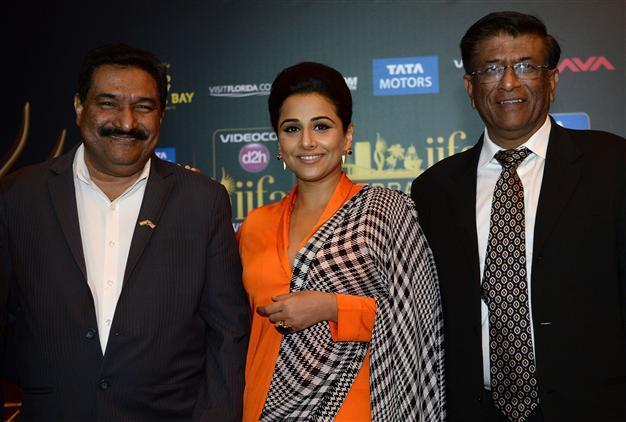With awards, Bollywood shows growing imprint in US
WASHINGTON - Agence France-Presse

Indian movie actress Vidya Balan, IIFA Director Sabbas Joseph and Host Committee Chairman Dr. Kiran Patel attend a press conference to promote the upcoming International Indian Film Academy (IIFA) Weekend and Awards, in New York. AFP Photo
Bollywood this week throws its premier awards event for the first time in the United States, which has quietly become the leading overseas market for India's prolific film industry.
The International Indian Film Academy on Wednesday kicks off four days of festivities in Tampa culminating in an awards ceremony Saturday that will bring out Bollywood's glitterati and Hollywood legend John Travolta.
While Bollywood is known for its extravagant song-and-dance routines, its expansion into the United States has been more understated. Indian films are increasingly shown in mainstream US cinemas which set aside specific screens and times.
The United States has topped Britain in recent years as the largest overseas market for Bollywood, fueled by demand from the three million-strong Indian American community and the growing ease of distributing movies through the digital format.
"Dhoom 3," the latest installment of a thriller series which is nominated for best picture at the Tampa awards, broke US records for Indian cinema after it was released last year.
Set largely in Chicago, "Dhoom 3" grossed more than $8 million in the United States and Canada, roughly on par with "Before Midnight," the second sequel to the US romantic classic "Before Sunrise."
Indian cinema's growth can easily fly beneath the radar in the United States, which has by far the world's largest box office and is thoroughly dominated by domestic fare. India, in turn, has the largest output of films at more than 1,100 a year.
But Gitesh Pandya, a US-based consultant for Bollywood studios, said that Indian cinema had innate advantages as it has a consistent audience of Indian Americans who are often well-educated and generally do not need expensive promotional campaigns to woo them to the movies.
Indian films that just five years ago would have opened at 80 to 85 screens in the United States now start in more than 200 theaters including in smaller cities where cinemas are happy to fill seats however they can, Pandya said.
"It's incredible growth. Theaters that five years ago would never think about playing one of these movies are now anxious to get the latest Shah Rukh Khan or Aamir Khan movie," Pandya said, referring to two stars whose films are considered relatively high-brow in Bollywood.
Pandya, who also manages the website boxofficeguru.com, said that India was the only foreign country with a self-sustaining film industry in the United States, as European, Latin American or other international movies rely on Hollywood or art-house distributors to select and distribute them.
"India is the only one that, 12 months a year, has films that come in and play in theaters here in the US," Pandya said.
In addition to Bollywood films, which are in Hindi, US cinemas regularly screen movies in other Indian languages such as Tamil and Telugu.
Despite the growth, no Bollywood film has won over mainstream US audiences and the annual awards -- always held outside of India to show the industry's global reach -- had shied away from the potentially massive market.
In hopes of crossing over to a non-South Asian audience, the International Indian Film Academy will kick off its Tampa weekend with a public party Wednesday in a park aimed at introducing US audiences to India's culture and film.
Prominent Indian actress Vidya Balan, who will appear at the awards, saw hope in her experience serving last year on the Cannes Film Festival jury.
She said she shared DVDs of Indian movies with her co-jurors, who included directors Steven Spielberg and Ang Lee, and that they quickly realized that Indian cinema offered more than formulaic songs and dances.
"People are slowing waking up to the reality that there is something universal in Indian films," she told AFP.
